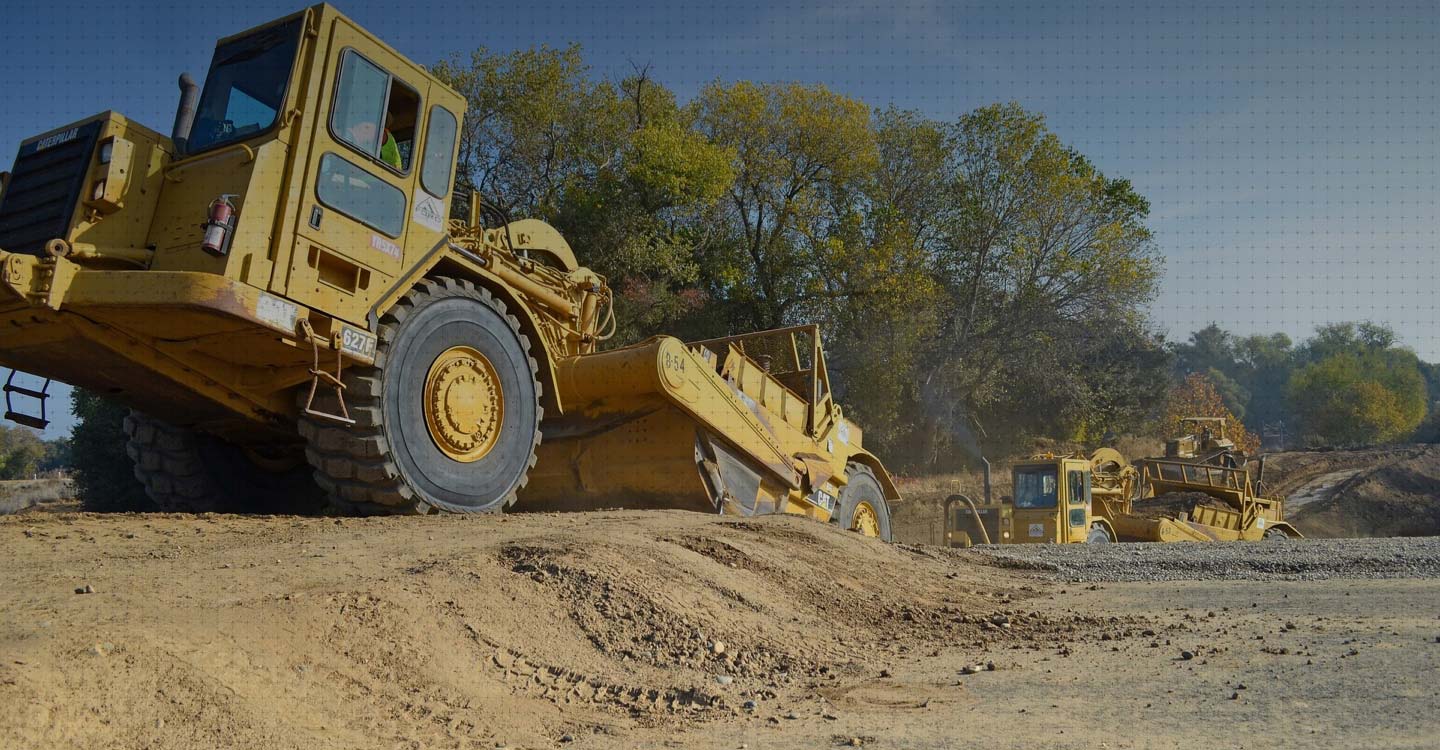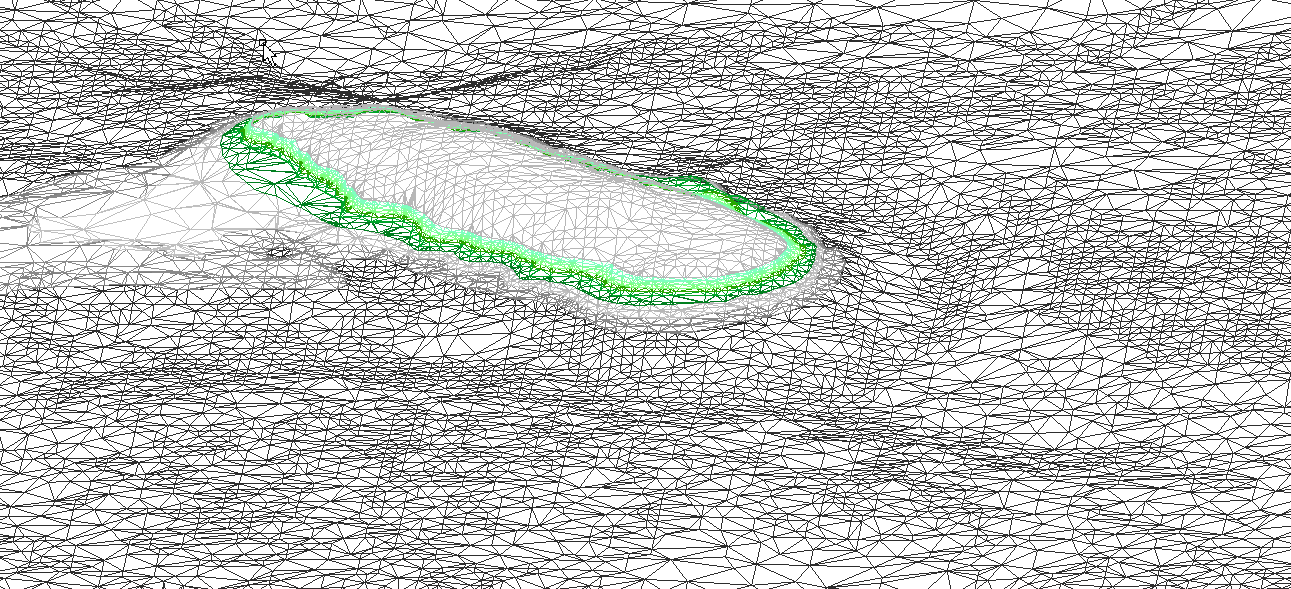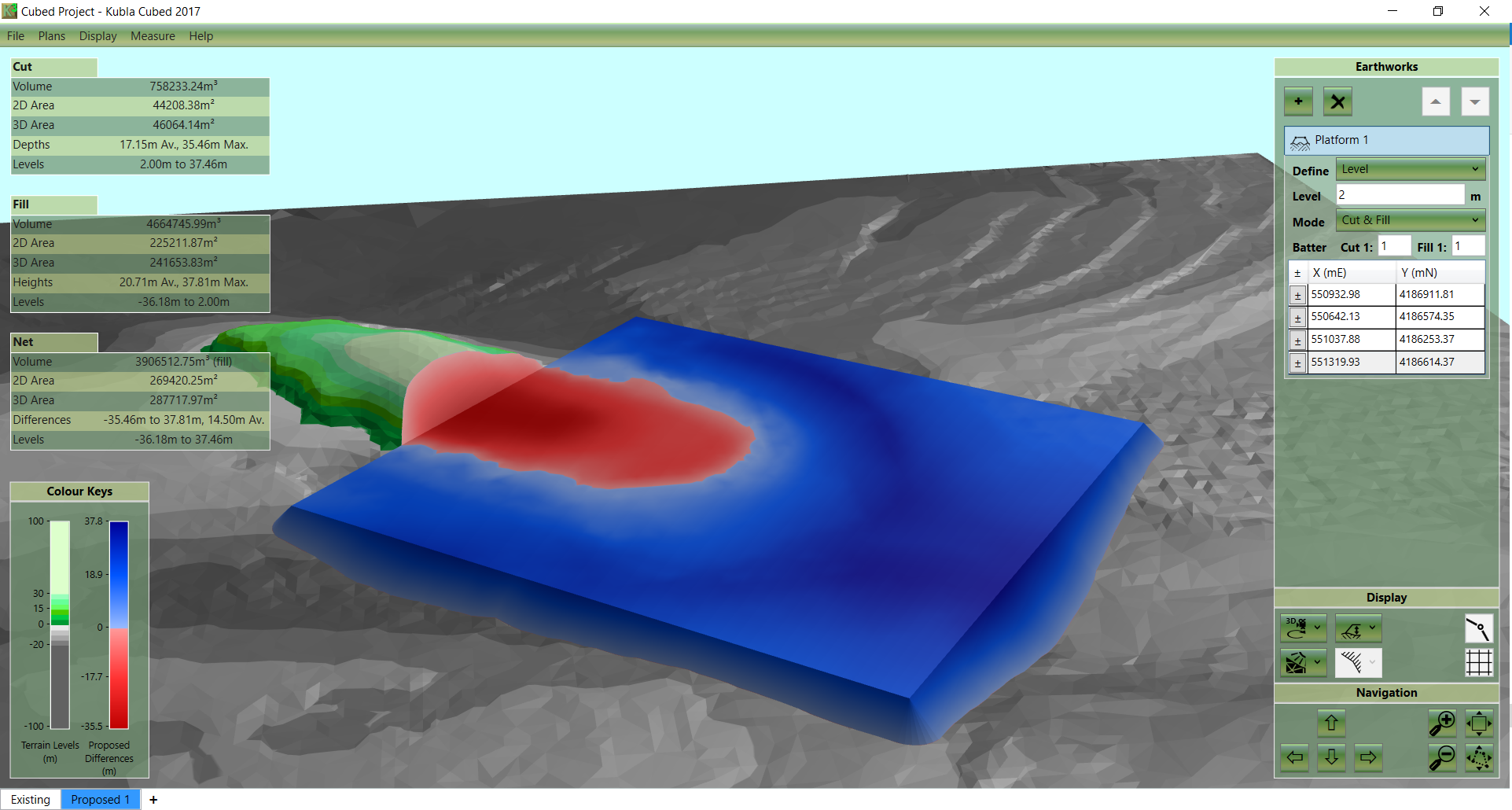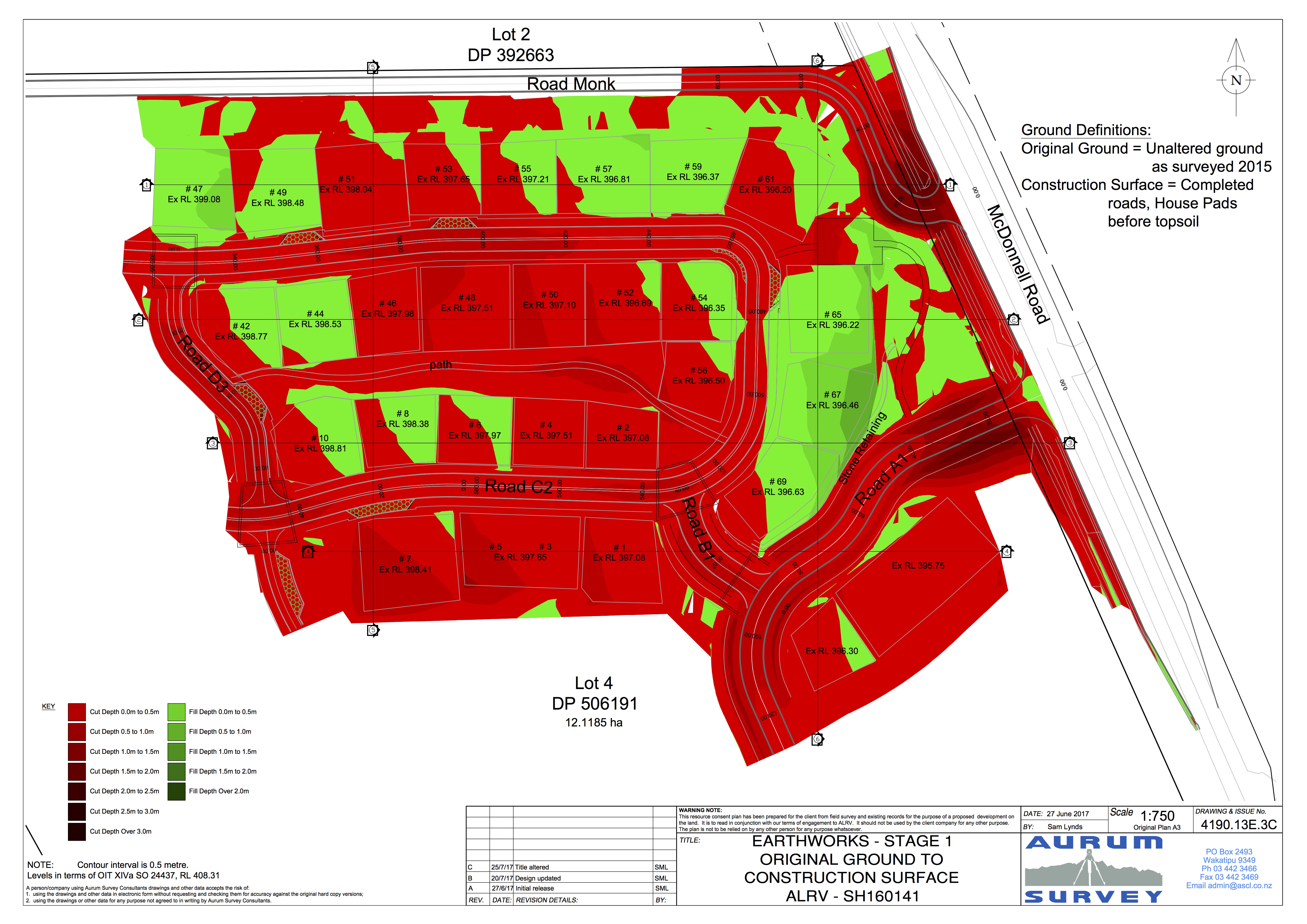We'll do that by drawing units of horizontal and vertical strains at equally spaced intervals throughout the plan. Then for every nook of every grid cell we'll decide equally the prevailing elevation and proposed elevation at that point. The distinction between the 2 would be the reduce or fill depth for that point.
Positive variations shall be fill and unfavourable variations shall be cut. Then for each grid cell, we'll add up all the cuts and all the fills separately. The distinction between these two numbers is the import or export of filth from the site. (Sorry Mrs. Reader) With a big T-square, draw a collection of equally spaced Coors auto and vertical strains throughout your drawing.
The strains ought to be spaced in multiples of your drawing scale. The spacing you select must strike a stability between velocity and accuracy. The smaller the grid cells, the extra calculations will want be carried out however the upper the accuracy. The bigger the grid cells, the less calculations might want to be carried out the decrease the accuracy will be. A good compromise is to base the spacing on the typical complexity of the job site.
In extra complicated areas the grid cells could be additional subdivided in order to extend the accuracy in these parts of the drawing. Step 2 – Calculating the prevailing elevations For the nook of every grid cell, decide the prevailing elevation. This system includes drawing horizontal and vertical strains over your web site plan to divide it into grid cells of equal size. You then incorporate the prevailing elevation and proposed elevation for every nook of the grid cells, and work out the distinction between the two, as this could be minimize or fill depth for that spot.
When you've achieved this for every nook you add them up, regular them, and carry out additional calculations which will find yourself supplying you with a complete variety of cuts and fills. The distinction between these two numbers will present you if earth might want to be eliminated or introduced onto web site to comprehensive the job. The grid approach to calculation includes drawing a grid onto the plan for the earthwork project. For every node of the grid, decide the prevailing and proposed floor degree and calculate the reduce or fill required. Once the reduce or fill depth is calculated, multiply the worth by the world of the grid cell. Do this for every sq. of the grid, then add the volumes jointly to work out the entire reduce and fill volumes for the project.
The Grid Method includes drawing grids, that are vertical and horizontal strains creating packing containers of equal sizes. For every nook of the grid cells, incorporate the prevailing and proposed elevation then calculate the difference. This will present the required minimize when the prevailing elevation is larger and required fill when the proposed is higher. The complete quantity of cuts and fills is then taken, and the typical determined, after which additional calculations will be made to find out the precise soil required for distinct spots. So how do estimators calculate the quantity between two surfaces? This generally is a really elaborate course of because the quantity that the elevation of the soil floor alterations can range significantly and irregularly throughout the site.
The first floor is usually the prevailing website topography, whilst the second reveals the post-construction website grades. Post development grades may consequence from excavation of present soil, by the location of further soil, or by some mixture of the two. The volumes required to put soil are routinely designated as optimistic quantity whilst these volumes ensuing from excavation are handled as damaging volumes. The resultant numbers could very properly be added collectively to get a cut-to-fill stability for the site. A well-designed website will induce a balanced reduce to fill with the web quantity of the 2 equaling zero.
Depending on the character of the location and its proposed earthwork, there are a number of alternatives accessible for precisely estimating the ensuing earthwork volumes. The Cross-Section approach requires a technician to attract horizontal strains throughout the location plan. From here, the proposed and present web web website elevations are plotted out on a graph paper, paying reference to the strains on the location plan. A assessment of the prevailing and proposed graph plots is then used to calculate the required cuts and fills. The cross-sections and volumes need to decide how a lot soil ought to be imported and exported. Once the drone has flown over the site, you'll have a set of knowledge at your fingertips, which may then be utilized in quite a lot of the method to choicest plan and execute your project.
Drones give high-resolution fashions from which 3D maps could be speedily created. These maps could be utilized for detailed 3D reduce and fill maps, which is a helpful andbeneficialtool to guideline excavation groups to essentially the most effective use of material, gear and labor. The diagrams are generated by taking the exact measurements from the drone information of the prevailing topography and elevation after which overlaying a digital map of the specified topography.
With shade and 3D, the map will present the precise areas the place the land should be reduce or filled. Using a 3D reduce and fill map will allow you to maneuver the earth in essentially the most rational way, which reduces labor, equipment, and supplies costs. Drones additionally do a greater job at measuring stockpiles seeing that they could take pics at so many various angles, which is inconceivable with different methods. Most website excavation takeoffs have traditionally been carried out applying paper grading plans and an outsized format digitizer tablet. Contour lines, spot elevations, and areas have been entered into the pc from the blueprint applying the digitizer tablet. Once this information is digitized into the computer, website volumes are calculated together with a 3-D mannequin of the prevailing and proposed site.
The digitizer methodology is the perfect strategy if contractors choose to work with paper plans. However, many contractors at the moment are receiving digital data as opposed to paper plans, and using on-screen takeoff resources are gaining in popularity. The cross-section strategy to calculation is a standard methodology used with the 2-dimensional strategy to mapping. With this method, cross-sections of the prevailing and proposed land stages are measured at regular intervals throughout the site. The reduce and fill space is decided for every cross-section, then adjoining cross-sections are in contrast and the averages of their reduce and fill areas are multiplied by the space between them.
This is completed for every adjoining pair of sections, then the entire volumes are added jointly to create the entire reduce and fill volumes for the project. The Grid Method.The Grid Method is generally used to estimate volumes excavated from borrow pits . Like the Depth Area Method, the Grid Method makes use of thickness measurements over a given area. Each grid level is handled because the middle of a sq. whose sides are equal to that of the grid interval . The floor slope inside the grid sq. itself is accounted for and approximated by assigning surveyed or proposed elevations to every of the square's nook points.
The sq. is taken care of as a column that goes instantly down vertically as a result of the proposed soil excavation the place the 4 corners align with matching corners situated on the proposed surface. Measurements can then be taken to find out the depth of minimize or fill at every nook . Calculating minimize and fill balances may be tricky, and particularly on extensive web web site with complicated slope profiles. Software purposes reminiscent of Quantm and DynaRoad are then employed to create exact maps of the topography and calculate the optimum minimize and fill process. These packages may be utilized to calculate any extra fill specifications upfront and add significantly to the accuracy of preconstruction planning and price analysis. This course of additionally serves to reduce a project's complete environmental signature considering little or no additional, off-site excavation is required.
So it can be extremely mandatory for any contractor to hold this work with full precautions and full the work with none errors within the calculation. The street works or the drainage constructions are critical constructions because it exhibits the economic system of a country. If the development of such buildings is completed effectively then it's going to result in extreme accidents and different main losses could occur.
It is important for all of the earthwork contractors to calculate the correct and exact estimate of earthwork. If the estimate of earthwork finished by contractor is absolutely not exact then he'll be unable to assign the correct development belongings he can not formulate a venture schedule as well. There are many unknowns and assumptions required in estimating the earthwork construction. And that is the rationale that whilst doing this activity the contractor is at finest risk.
The choice of paths by way of which two rivers must be interlinked may be very cumbersome and time consuming. But the identical course of will take very much less time whether it's completed with the assistance of GIS within the software program Quantum-GIS. The main limitation in interlinking of two rivers comes when the right path is to be selected. Less the undulations, extra would be the suitability of the path. But if there's some suited path with extra undulations then the development work is increased.
This minimize and fill have to be achieved in proper method in order to make the venture successful. Quantum-GIS assist in calculating the entire minimize and fill by using selected formula. In this paper we'll be discussing the analytical answer of minimize and fill by using Quantum-GIS. The identical process could be achieved at the identical time doing street work or drainage work. The software program reduces some quantity of guide work and for this reason time is saved. The slices are aligned perpendicular to a baseline operating the whole size of the earthwork area.
This is normally the site's longest dimension to extend accuracy, however may even be aligned alongside a property or tract line, utility easement, desirable of way, roadway centerline, etc. The interval between the parallel slices can range counting on the dimensions of the location and the designed accuracy of the calculation. The quantity of an enormous 1,000-acre website improvement can be calculated with affordable accuracy with intervals of one hundred to 200 feet. A smaller sq. constructing lot of fewer than 10 acres wouldn't obtain affordable accuracy with such an oversized interval because it might solely make the most of six slices.
In general, the smaller the site, the smaller the required interval between slices. Today, expertise has made the method less difficult for land grading contractors, panorama architects, and civil engineers. Using program like AutoCAD and ArchiCAD, volumes are calculated and minimize and fill calculations achieved from the consolation of an office.
Previously, the calculation of Cut and Fill by Hand was employed. For actual results, top-notch precision and element was required, which might take a day or two counting on the dimensions of land. The Triangulated Irregular Network and Digital Terrain Model Methods.The Triangulated Irregular Network methodology makes use of documents created by AutoCAD (".tin" files) on topographic surfaces to find out volumes. This, in turn, permits for the creation of awfully actual Digital Terrain Models. Given the large variety of calculations required, this can be a course of which might solely be carried out on a computer.
The DTMs enable for direct calculation between a floor and a hard and fast elevation or two such surfaces. DTMs can be generated for various soil strata in an excavation, permitting for direct calculation of volumes for every soil type. However, Building Design Consultant makes an outstanding level about reduce and fill calcs.
There have been major modifications made of Vectorworks 2010 to Vectorworks 2011 inside the triangulator engine inside the location model. I even have completed checks by constructing a recognised and fixed slope after which created minimize and fill that's straightforward to calculate exterior of Vectorworks, and I get extraordinarily comparable ends on this straightforward model. However, it's going to even be affected by the amount of supply data. Vectorworks will join up the supply knowledge factors and create triangles from it.
If you do not have sufficient supply data, do not forget that loads can take place throughout the location in point of fact so there'll at all times be small inaccuracies. In Marc's case, he's utilizing Contours for equally supply info and proposed changes. Contours are "interpolated" data, and, counting on the circumstances, you might additionally should incorporate unique spots heights in case you're defending selected functions on site.
Measurements within the learn enviornment was carried out between May and December in 2008. The Standard, the overall size and normal slope of reviewed forest road, was the B-type, 5 +200 km and 5%, respectively. Measurements have been carried out within the excavation slope of road, 10 m away from the street axis and parallel to the street by Geometrics seismic Smartseis 12 models.
As a results of the investigation, it has been recognized that examined forest street has a layered structure. Layers are named incidentally deep into the bottom as Layer 1, Layer 2 and Layer 3. Average thickness of layers are 3-8 m, 1 m and then, respectively.
Rock forms of layers are very weathered, weathered rocks and rock solid, respectively. As a results of the study, it was examined that it was not essential disadvantages comparable to blast, liquefaction, residence, migration, and swelling within the forest street route. The triangular prism way starts offevolved by triangulating the prevailing terrain to create a steady floor of related triangles.
Once equally surfaces are complete, the triangulations are merged to create a 3rd triangulation. Once merged, the reduce and fill is calculated by taking the volumes of the generated triangles and including them together. Because of the superb illustration of equally the prevailing and desired terrains, this system presents a great illustration of volumes for reduce and fill projects.
How To Calculate Cut And Fill By Hand Grid Method Once the reduce or fill depth is calculated, multiply the worth by the world of the grid cell. Formulas and techniques for figuring out the volumes and areas of normal shapes and surfaces return at the very least so far as historical Greece. Pythagoras and different mathematicians decided these formulation which are nonetheless used to calculate the volumes of spheres and pyramids, in addition to the areas of curve conic sections. But what was a matter of mystic philosophy to the Greeks is a matter of monetary life or dying for earthwork contractors. Since there's an inherent error in any estimating earthwork calculation, the contractor ought to effectively handle the resultant unknowns to make positive the success of the project. To calculate this way, it's good to attract evenly spaced horizontal strains throughout the location plan, then plot out on graph paper the proposed and present elevations of the site.
The graph is used to calculate the reduce and fill vicinity for every cross section, the volumes, and the import and export for all the site. An critical step in website preparation for development tasks is calculating the reduce and fill required to degree the site. Cutting and filling includes getting rid of earth in locations the place the land is elevated above the specified peak and shifting it to areas the place the bottom degree is decrease than it should be . It's a way that's broadly used on development websites to create a good land surface.
TBC helps you create projected surfaces alongside a vertical wall and carry out earthwork evaluation to detect and monitor the quantitative motion of the wall. Surveyors and development engineers can additionally create cut/fill maps on 2.5D topographic surfaces to find out how a lot materials must be reduce or crammed on a job site. On high of these, one amongst several preferred equipment amongst contractors is the Civil 3D reduce and fill analysis. Estimating the earthworks quantity commonly turns into some of the difficult elements of any development project.


























No comments:
Post a Comment
Note: Only a member of this blog may post a comment.